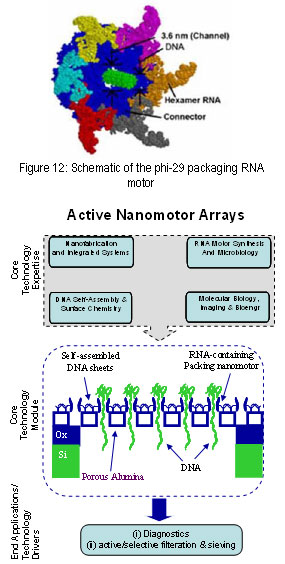Research: >> Past >> Nano-Medicine...
Nano-Medicine: Use of Phi-29 Packaging RNA NanoMotor for Active Devices
Demir Akin, Peixuan Guo*, Chengde Mao^, Rashid Bashir,
School of Electrical and Computer Engineering, Weldon School of Biomedical Engineering, *Department of Veteniery Pathobiology, ^Department of Chemistry, Purdue University
A specific project recently funded through NIH Nanomedicine Center involves the use of the Phi-29 packagaing RNA nanomotor and interfacing this biological motor with micro/nano fabricated devices. The center overview can be found at (http://www.vet.purdue.edu/PeixuanGuo/NDC/). The goal of the proposed Nanomedicine Development Center (NDC): “Phi29 DNA-Packaging Motor for Nanomedicine”, is to create biologically compatible membranes and arrays with embedded and active phi29 DNA-packaging motors for applications in medicine.
|
Figure 13: Overview of the thrust 3 of the NDC Center – integration of nanomotors with artificial devices. |
For example, currently there is no nanodevice available for actively pumping drugs, DNA/RNA and other therapeutic molecules into specifically targeted cells. Our NDC, (also referred to as the Nanomotor Drug Development Center, NDDC), will create a hybrid system that combines the best features of the biological motor with synthetic delivery systems that have already achieved clinical success. The re-engineered motors developed will also be applied in various array formats to extend application to diagnostics and other therapeutic approaches. One of the thrusts is to develop novel diagnostic and therapeutic devices by integrating the phi-29 motor to micro/nano fabricated surfaces. We are working on making arrays of these motors for possible application selective filteration and sieving devices. Specifically we are working on use of surface fucntionalization techniques to form motor arrays on silicon surfaces and demonstrate the operation of motor arrays. Next we will work on use of nanoporous membranes and attempt to attach the nanomotors on these membranes in hopes to make selective sieving and filteration devices.
